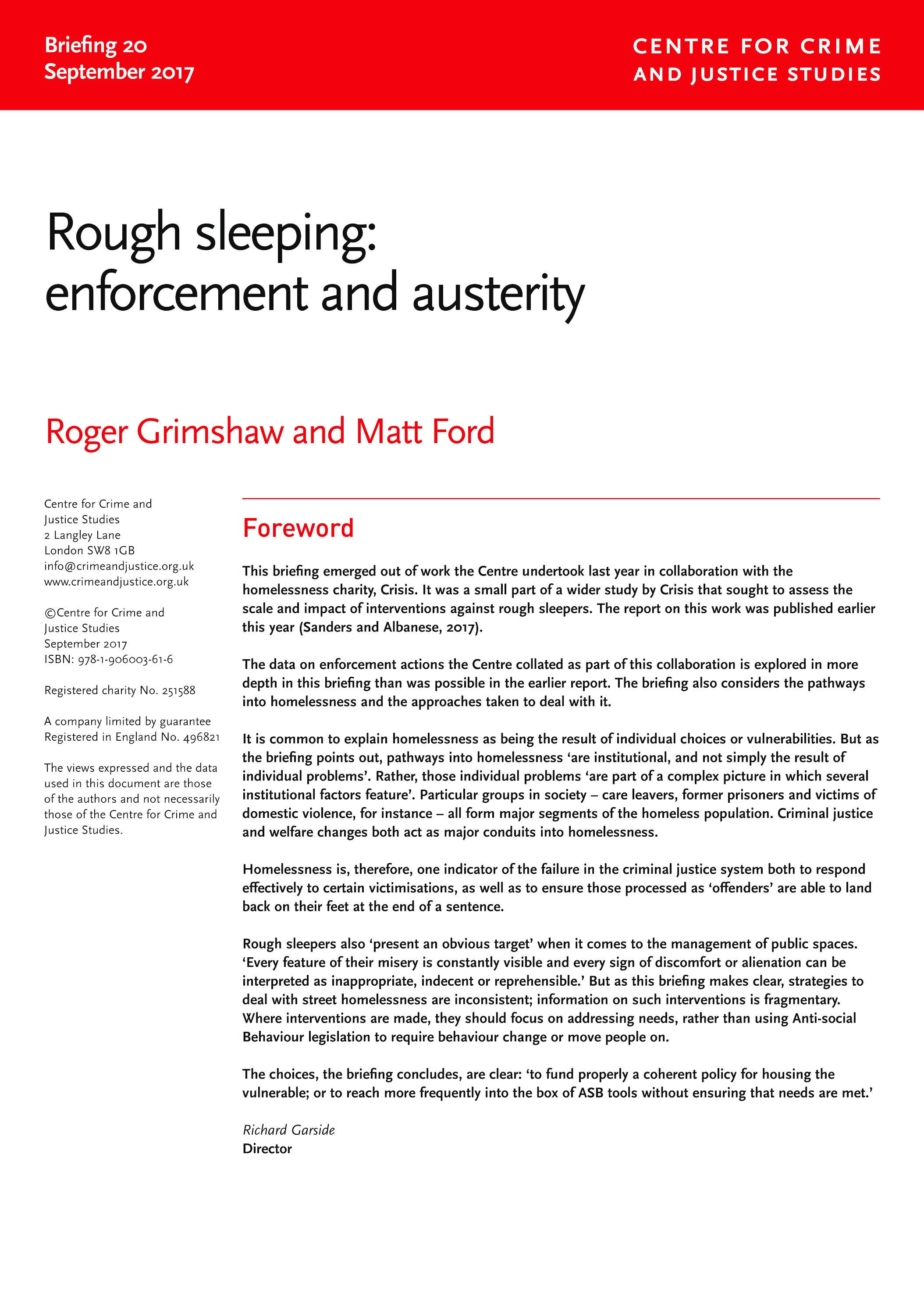This briefing emerged out of work the Centre undertook last year in collaboration with the homelessness charity, Crisis.
It was a small part of a wider study by Crisis that sought to assess the scale and impact of interventions against rough sleepers. The report on this work was published earlier this year.
The data on enforcement actions the Centre collated as part of this collaboration is explored in more depth in this briefing than was possible in the earlier report. The briefing also considers the pathways into homelessness and the approaches taken to deal with it.
It is common to explain homelessness as being the result of individual choices or vulnerabilities. But as the briefing points out, pathways into homelessness ‘are institutional, and not simply the result of individual problems’. Rather, those individual problems ‘are part of a complex picture in which several institutional factors feature’. Particular groups in society – care leavers, former prisoners and victims of domestic violence, for instance – all form major segments of the homeless population. Criminal justice and welfare changes both act as major conduits into homelessness.
Homelessness is, therefore, one indicator of the failure in the criminal justice system both to respond effectively to certain victimisations, as well as to ensure those processed as ‘offenders’ are able to land back on their feet at the end of a sentence.
Rough sleepers also ‘present an obvious target’ when it comes to the management of public spaces. ‘Every feature of their misery is constantly visible and every sign of discomfort or alienation can be interpreted as inappropriate, indecent or reprehensible.’
But as this briefing makes clear, strategies to deal with street homelessness are inconsistent; information on such interventions is fragmentary. Where interventions are made, they should focus on addressing needs, rather than using Anti-social Behaviour legislation to require behaviour change or move people on.
The choices, the briefing concludes, are clear: ‘to fund properly a coherent policy for housing the vulnerable; or to reach more frequently into the box of ASB tools without ensuring that needs are met.’
